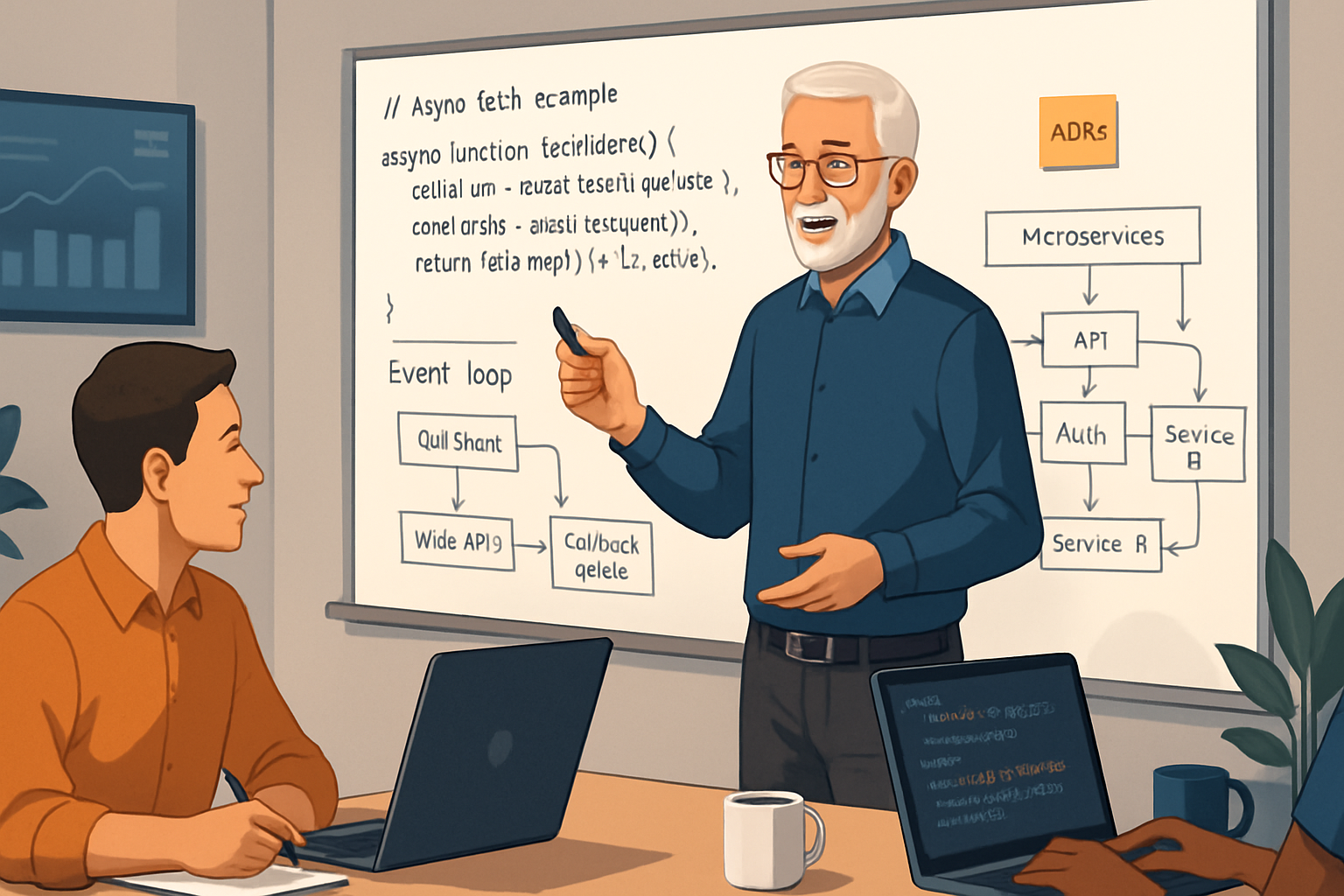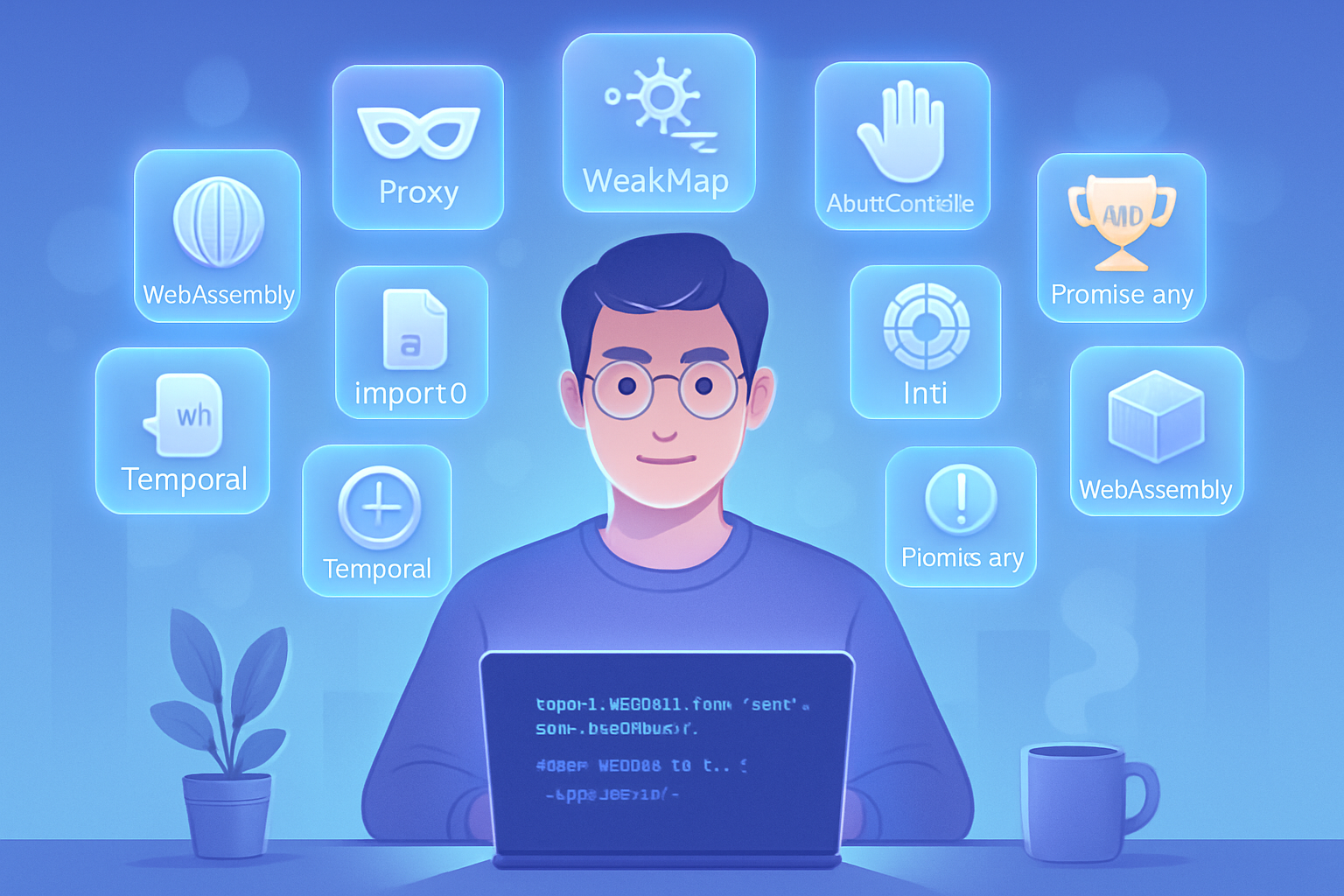· career · 6 min read
The Thin Line: Staff Engineer vs Senior Engineer in JavaScript Development
A practical, in-depth look at how staff and senior engineers differ in responsibilities, expectations, and measurable impact within JavaScript teams - and how understanding the subtle boundary between them shapes team culture and career decisions.

What you’ll get from this article
By the end you’ll be able to tell, with concrete signals and a practical checklist, whether you (or a teammate) are operating at a senior or staff level in JavaScript teams - and what to do next. You’ll learn the real differences in day-to-day work, the expectations companies attach to each title, how influence and scope change the role, and a 90-day plan to move from senior to staff responsibility.
Short version: senior engineers solve hard problems locally. Staff engineers solve hard problems that cross multiple teams. The boundary is thin. But it matters.
Why this distinction matters (and why it’s often fuzzy)
Titles are compact shorthand for expectations. They affect hiring, compensation, promotion, and - most importantly - how teams are organized and how decisions get made.
In JavaScript ecosystems this becomes especially visible because teams often ship full-stack features (frontend frameworks, node services, build tooling, CI/CD) where a single engineer’s decisions can ripple across product, performance, and developers’ day-to-day.
Because product velocity and developer experience are business signals, the difference between a senior engineer and a staff engineer is more than prestige. It’s where leverage lives.
Clear definitions (practical, not theoretical)
Senior Engineer (individual contributor - experienced): owns end-to-end delivery for features or subsystems. Writes reliable, maintainable code. Mentors peers. Champions best practices within a team.
Staff Engineer (individual contributor - technical leader): owns cross-team tech problems, long-lived architectural decisions, and the health of a broader domain. Coaches other senior engineers. Shapes roadmap and standards.
These definitions are intentionally outcome-focused. Companies may call similar roles by different names (Principal, Senior Staff, Tech Lead); read the outcomes, not the badge.
Responsibilities - side-by-side
Senior Engineer
- Deliver features and projects reliably. Meet shipping commitments.
- Drive technical design within a single team or service.
- Ensure code quality: testing, reviews, maintainability.
- Mentor juniors and participate in hiring within the team.
- Triage production issues and design fixes.
Staff Engineer
- Define and evolve architecture across teams (shared libraries, monorepos, APIs, build systems).
- Solve systemic problems (performance at scale, CI bottlenecks, cross-team developer experience).
- Influence product and engineering roadmaps through technical context.
- Create standards, guidelines, and shared platforms.
- Coach senior engineers and act as a force-multiplier for the organization.
Scope, impact, and influence - the real differentiators
Three dimensions matter more than raw coding skill:
Scope - How many teams, codebases, or product areas does your decision affect? Senior: one team. Staff: several teams or an entire platform.
Impact - Is the change about feature outcome or systemic cost (developer time, platform reliability, onboarding)? Staff focuses on systemic impact.
Influence - Do you only win by shipping your own code, or can you drive adoption and decisions without owning each change? Staff engineers succeed by persuading, documenting, and delivering prototypes that others adopt.
A good way to test: if you stopped working for a week, would the product still move? If yes, you might be staff-level - because you’ve enabled others to move without being the bottleneck.
Skills and mindsets that separate the roles
Technical breadth and depth
- Senior: deep knowledge in the primary stack (e.g., React, Node, GraphQL, Typescript) and solid understanding of adjacent areas.
- Staff: broad understanding across stacks (frontend build pipeline, backend services, infra, observability). Able to reason about trade-offs that bridge areas.
Communication
- Senior: explains technical trade-offs to peers and product partners.
- Staff: aligns stakeholders with different incentives - product managers, infra teams, and executives - and writes guidelines that scale.
Systems thinking
- Senior: thinks about the subsystem’s reliability and performance.
- Staff: thinks about compounding technical debt, long-term maintainability, and organizational cost.
Decision framing
- Senior: chooses the right tool for the team problem.
- Staff: chooses which problems should be solved by tooling, which by policy, and which by education.
Concrete examples in a JavaScript context
Scenario 1 - Performance regression in production
- Senior: diagnoses a hotspot in a React component or a backend handler and ships a fix.
- Staff: investigates why regressions occur across services - CI tests, bundle analysis, shared utility libraries - and builds guardrails (performance budgets, automated bundle analysis in CI) so teams don’t repeat the same error.
Scenario 2 - New frontend architecture (e.g., migration to a new framework or monorepo strategy)
- Senior: leads migration of their team’s app to the new framework.
- Staff: designs the migration strategy, API contracts, shared tooling, and coordinates timing, training, and rollout to minimize cross-team friction.
Scenario 3 - Developer onboarding and DX
- Senior: improves documentation for their repo and mentors new hires.
- Staff: creates cross-team onboarding flows, templates, and platform services that reduce setup time from days to hours.
How companies measure the roles (signals used in hiring and promotion)
Senior-level signals
- Consistent delivery of non-trivial projects.
- Strong ownership and reliable execution.
- Positive impact on team quality through mentoring and code reviews.
Staff-level signals
- Repeatable influence across teams without direct authority.
- Significant reductions in organizational friction (deploy frequency, incident resolution time, onboarding time).
- Clear artifacts: technical strategy docs, RFCs, platform libraries, or open-source components adopted by multiple teams.
When interviewing, companies often look for examples that show repeatability: not just one lucky win, but a pattern of enabling others.
A practical 90-day plan: move from Senior → Staff influence
Days 1–30: Observe and map
- Map pain points that affect multiple teams (CI time, shared libs, patterns causing bugs).
- Talk to engineers across teams: learn their workflows and constraints.
- Start small: propose a cross-team postmortem or brown-bag.
Days 31–60: Prototype and persuade
- Build a lightweight prototype or RFC that addresses a systemic problem.
- Run a workshop or demo with stakeholders.
- Measure impact: reduced steps, faster CI, fewer incidents.
Days 61–90: Scale and document
- Publish standards, templates, or a small platform tool.
- Mentor other seniors to adopt the change.
- Track adoption and report measurable improvements to leadership.
Repeat. Influence is not a one-off.
How this affects team culture
Staff engineers set norms. Their decisions (or absence of decisions) determine whether teams reproduce technical debt or contain it. A healthy staff role leads to:
- Faster onboarding and predictable delivery.
- Better cross-team communication and fewer accidental conflicts.
- Stronger developer experience and fewer duplicated efforts.
Poorly defined staff responsibilities create friction: people reimplement solutions, or architecture drifts. The thin line, when unclear, becomes organizational debt.
Interview and promotion tips (for candidates and managers)
For candidates aiming for staff:
- Bring artifacts. RFCs, platform code, proposals, and metrics show repeatable influence.
- Tell multi-team stories. Structure answers to show context, constraints, stakeholders, and adoption.
- Show coaching evidence. Give examples where you taught a pattern and it spread.
For managers promoting seniors to staff:
- Look for patterns, not single wins.
- Give scoped authority. Let the candidate run a cross-team initiative with measurable goals.
- Measure outcomes, not just output. Did time-to-ship or incident rate improve?
Common traps and how to avoid them
Trap: confusing busyness with influence
- Fix: measure adoption and business outcomes, not just PR counts.
Trap: becoming a gatekeeper
- Fix: reduce friction. Staff-level work should enable others to act without you.
Trap: staying too deep in code
- Fix: balance implementation with evangelism and documentation. The job is to make other people successful.
Resources and further reading
- Will Larson’s writing and resources on staff engineering: https://staffeng.com/
- State of JavaScript survey for ecosystem context: https://stateofjs.com/
- Camille Fournier’s writings on technical leadership: https://www.camillefournier.com/
Final takeaways - the strongest point
Senior engineers are indispensable executors; staff engineers are force multipliers. Both are vital. But if you want to step across the thin line, stop proving you can solve hard problems alone. Start enabling many others to solve them without you. That shift - from hero to multiplier - is what truly separates staff-level impact from senior-level excellence.



